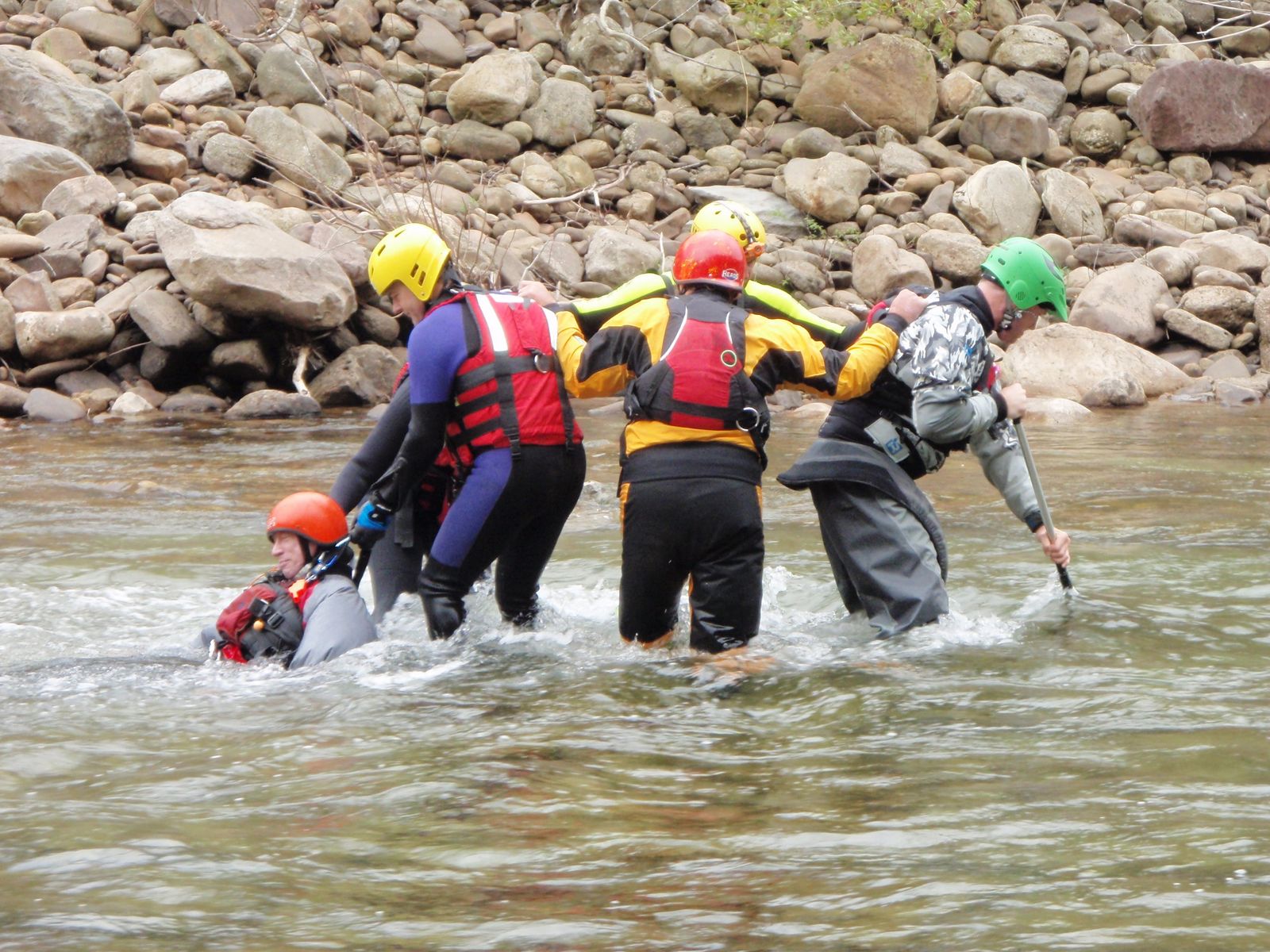Swim instead of fighting for marginal footing
If it is hard to maintain footing in current, swim or crawl. The same holds true for unstable river bottoms. Foot entrapment is serious business - something you definitely want to avoid. If the water is deep enough to swim in, you will make MUCH faster progress continuing to swim.
Safe eddy rule
When standing in swift moving water, we need to be very careful to avoid foot entrapment. Avoid the temptation to immediately stand in water when crossing a stream. Make certain the water level is at or below your knees. Take your time getting up and use your toes to feel around for solid footing. Here is a nice eddy describing when you can stand in whitewater: Whitewater - When to Stand.
Wading
 When water is shallow enough, wading is a very effective way to reach a victim. Wading also enables a team to safely transport a victim with far more control than swimming.
When water is shallow enough, wading is a very effective way to reach a victim. Wading also enables a team to safely transport a victim with far more control than swimming.
In a number of rescue scenarios, it may be necessary to get a person at the accident location. This is especially true in many pin situations. Wading is often combined with swimming and perhaps using your boat to reach the victim. Wading is especially useful in shallow water, water below knee depth. Wading has it's own unique challenges. If you have ever tried walking on wet rocks (especially muddy rocks), you will notice they can be quite slippery. Moving current compounds the challenge in staying upright. Most wading techniques add one or more "legs" to form a more stable posture.
One danger we always need to keep in mind is the possibility of foot entrapment. Take your time when wading. Sometimes it may be difficult to look under the water surface. While placing weight on your brace, feel the surface bottom with your toes for nice stable positions. Once both feet are firmly planted, you can then move the brace. Always be prepared to swim either on purpose or by accident. Swimming is actually faster and safer as the water gets deeper. Avoid standing in fast current where possible, this is known as the "Safe Eddy Rule". A safer approach is to mix short swims in the fast water with rest stops in the slack water of an eddy. Here is a good article on wading technique from a fire & rescue journal: Wading Technique Article
Page 4 of 4
